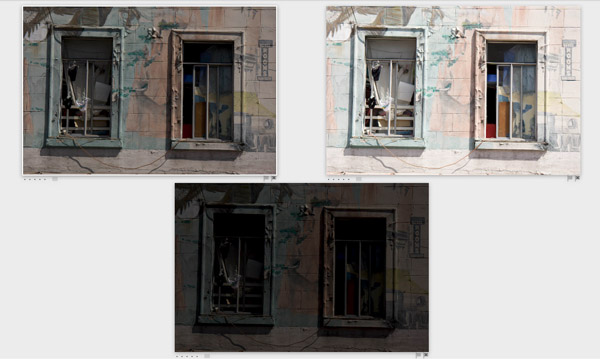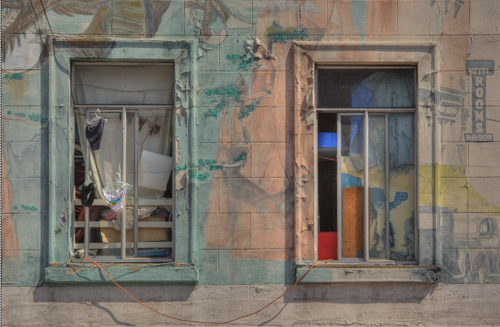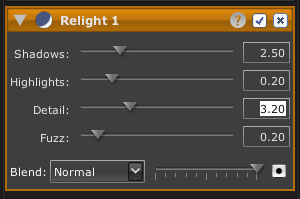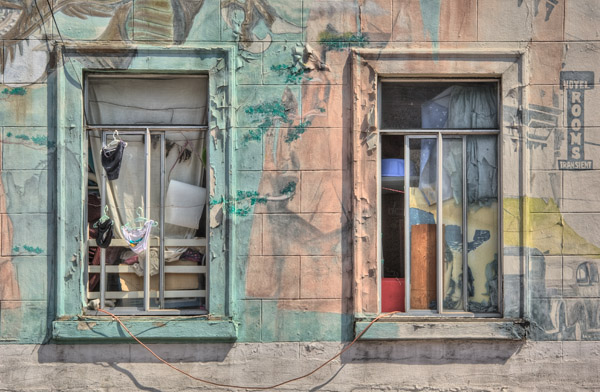9/7/2007: We use this technique now also with the Canon EOS 40D.
Improving the dynamic range that our digital cameras can capture is for us somehow more important than getting higher resolution or megapixels. There is a well-known technique to capture more dynamic range: shooting more than one image at different exposures (bracketing). From these multiple exposures you then can create HDR (high dynamic range) images. This article won’t explain HDR in more detail (read also our article "Advanced Merge to HDR").
The enemy of merging images is any sort of movement (moving objects or moving cameras). That is why exposure bracketing is most often only applied to static objects and the camera is mounted to a sturdy tripod. THis of course impose sever limitations what we can shoot using HDR.
If in theory these multiple exposures could be captured instantly both issues
- Moving objects
- Camera move
would be no problems at all. We may actually see in the future cameras that could implement this kind of strategy: capture multiple exposures and still freeze even faster moving objects.
Speed Matters
Recently we got a Canon 1D Mark III camera for review (see note below on the Canon 40D). This camera can capture 10 fps. The main audience is sports and also wildlife photographers. In general we photograph more static nature or urban landscapes. THis means fast burst of images in general do not matter for us. Once we got used to the 1D Mark III we started experimenting with what we call “High Speed HDR”. What does this mean? The camera is set to the highest burst rate (10 fps) and we capture bracketed shots at this speed. This means a 3 shot (-2, 0, +2EV) bracketed sequence is shot in less than half a second. Why does it make a difference? Everything that does not move much in ½ second is frozen in all three exposures. It limits the camera movement and also captures all slow moving objects reasonable sharp.
Important Note: We now use the same technique successfully with the new Canon EOS 40D (read our review). The 6.5 fps work very well.
We used this technique for at least 1,000 shots (at 2 0r 3 shot brackets) and it started to change our photographic style.
Good and bad light?
Photographers talk a lot about “good” and “bad” light. Actually they do not really talk about the light. They mean that some sort of light is not “good” for their photos. It is bad because normal film or digital cameras cannot capture the dynamic range in the scene. Using HDR techniques (multiple exposures and tone mapping) you can capture quite a bit more dynamic range. Then again freezing movements is essential. We are using “High Speed HDR” now in many light situations that we called previously “bad” light and get very pleasing results.
Note: The sample we present was shot at strong sunlight in San Francisco. We photographed this scene many times before never got a result we really liked. Nearly all of our Canon 1D Mark III portfolio shots were created this way.
Notes on camera technique
We use exclusively image stabilized zooms (most of the time in the 70-200mm range) and shoot handheld or use the aid of a monopod. The ISO range is set to a value that allows us to keep even the longest exposure in our bracket to be sharp if shot handheld (but also taking the image stabilization into account).
Mix & Match
This is actually like a classic bracketing technique. It allows what we call “Mix & Match”. We can use the best single exposure or combine the images (2 or 3) into a HDR files.
Sample
After some experiments we started with a sequence of -2, 0, +2EV. The bad news of using this technique is that we need more space on our CF cards and disks and also way more time for image processing.

-2,0,+2EV bracket
In tools like LightZone you may even be able to rescue the +2EV overexposed photo. We prefer to combine all three shots in Photomatix and create a HDR image first (again we refer to our article "Advanced Merge to HDR").
Tonemapping is important
Once you have a HDR image you need “tonemapping” to fit the high dynamic range into a contrast range that can be printed. Actually tonemapping is at least as important as capturing the full dynamic range. Why?
- Without tonemapping HDR images would not be helpful for making prints
- Tonemapping can also be used for single low dynamic range images (open shadows, tame highlights and extract details).
We actually use a two step process tonemapping process:
- Tonemapping in Photomatix

After Detail Enhancer ToneMapping in Photomatix
We are very careful during tonemapping not to clip any highlight data and also try to preserve as many shadow details as possible (we stay in 16bit all the time).
2. Finally we fine-tune the photo in LightZone (using mainly the powerful Relight tool, Relight is a top class tonemapper and detail extractor)

LightZone Relight sample settings
and get the following final image:

After final tuning in LightZone
Notes:
- You probably have realized that we also performed a perspective correction. We do this in Photoshop using the Crop tool.
- We enable the Canon 1D Mark III “Highlight Priority” mode. This gives us about 1 f-stop more latitude in the highlights. There is likely slightly more noise in the shadows though. This shadow noise is easily removed by using multiple exposures.
Conclusion
We think High Speed HDR is a new and powerful technique. Being able to capture good photos freehand and at normal sunlight opens new possibilities. Besides more space for images and more imaging work we don’t see a lot of disadvantages. If some of the objects move too much we can pick the best single exposure. Of course we need tools like LightZone’s Relight to open up the dark shadows and tame the highlights. We will continue to experiment with different bracketing sequences:
- -1, +1 EV: saves space
- -1, 0, +1 EV: would allow getting a good optimal single exposure that cannot be more than ½ f-stop off.
- -2, 0, +2 EV: if you want to captures an even larger dynamic range. The +2 EV exposure may often require the use of the tripod though.
All the following elements are very important:
- Fast frame rate
- Highlight Priority for the 1D Mark III
- Merging to HDR
- Tonemapping
- LightZone Relight tool (we use it nearly on every image now).
|